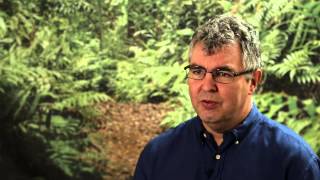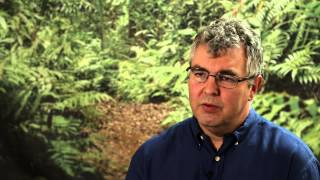More than 120 heads of states and tens of thousands of people will converge on New York next week to focus the world’s attention on the deteriorating state of our climate and the ever-pressing need to take action.
Forests will be high on the agenda amid the negotiations, debates and search for solutions – and rightfully so. But advocating for their inclusion in a climate agreement without looking at the bigger picture risks undermining our efforts.
Without forests, climate change would be even more severe than it already is. Forests and trees regulate climate and water in landscapes across our planet. They protect soils and provide both nutrition and renewable energy to hundreds of millions of people. Without these services, our food systems would be extremely vulnerable; poor people in particular would lack basic provision for their livelihoods. Forests also serve as a safeguard against the effects of massive emissions from the use of fossil fuels. We need forests if we are to survive.
Our mature and re-growing forests have been storing 4–6 Gigatons of carbon every year since the 1990s – which means that more than one-third of the fossil fuel emissions pumped into the atmosphere over the past 20 years have been taken up by our forests. Remember that forests store twice as much carbon as the entire atmosphere – a most useful buffer to the adverse effects of current human behavior.
We can benefit further from forest photosynthesis in counteracting the effects of fossil fuel emissions. The IPCC’s Fifth Assessment Report on mitigation of climate change suggests that we look at ways to manage forests more actively. The science recommends we make more effective use of wood and fiber while maintaining the capacity of this huge solar-based sequestration engine. Forest photosynthesis provides a benefit in counteracting the effects of fossil fuel emissions; this benefit should not be ignored or underestimated.
And yet we continue to degrade forests, or convert them to agriculture. These activities significantly reduce not only the volume of carbon storage, but also the provision of essential ecosystem services to people. The REDD+ initiative is designed to deal with these matters both in policy and governance and in technical implementation.
Forests obviously play a crucial role in mitigating climate change and strengthening resilience – but we must also be wary of focusing too narrowly on forests and forestry alone when seeking solutions.
Let us be clear that we can never separate adaptation and mitigation in the land-based sectors. The same biological processes that buffer CO2 levels in the atmosphere also provide for livelihoods, health and food security, and they strengthen resilience to the effects of climate change.
What we need now is the political will to help put the finance in place, especially from wealthier countries
However, there will always be trade-offs and we must be aware of these – addressing land use in a piecemeal fashion could lead to a situation where mitigation efforts undermine adaptation efforts and vice versa.
We therefore have to accept that forestry and agriculture – together – must be a major part of the climate solution. As we move toward Paris, it is essential to see this connection in the context of an anticipated broad framework agreement that could enable action on different levels and scales.
CIFOR and all the research centers in the CGIAR take the climate change challenge very seriously. Indeed, for all of the CGIAR, climate change is one of the issues that will define our mission for the next decade, as will be demonstrated at the CGIAR Development Dialogues next week. Climate-smart agriculture is high on our agenda, as yet another expression of our recognition that we must embrace complexities on the ground if we are to improve livelihoods, strengthen resilience and, at the same time, reduce emissions.
Climate-smart agriculture and the landscape approach largely share the same narrative in addressing multiple goals and multiple stakeholders, and increasingly we are seeing more of this reasoning. By contrast, advocacy for a single issue at a time may have been useful for political awareness and action, but it will perhaps prove less successful in delivering real-world solutions.
The same complexity of simultaneously improving livelihoods, increasing resilience and reducing emissions is also inherent in REDD+ with its need for negotiated safeguards. In the years since it was first introduced into UN climate negotiations, REDD+ has evolved and matured. At technical and governance levels, we are ready to scale up the efforts. What we need now is the political will to help put the finance in place, especially from wealthier countries.
Let’s hope that the Green Climate Fund will provide the thrust to move REDD+ forward, that governments in the developed world will step up and capitalize the fund, and that innovations at different jurisdictional levels will continue to emerge and deliver.
The UN Climate Summit this year provides an opportunity for tangible commitments to the Green Climate Fund, to continued work on REDD+, and to climate-smart agriculture and landscape approaches – both of which are needed to tackle the challenges broadly and pragmatically.
But also – and maybe more importantly – I hope that the UN Climate Summit will prove to be a time for strengthening of political commitment and political spirit of cooperation, so that we can be confident of reaching an agreement in Paris next year.
Peter Holmgren will moderate a high-level discussion on Climate change-resilient agro-ecosystems at the CGIAR Development Dialogues in New York on 25 September. The event will be webcast live through CIFOR TV.
We want you to share Forests News content, which is licensed under Creative Commons Attribution-NonCommercial-ShareAlike 4.0 International (CC BY-NC-SA 4.0). This means you are free to redistribute our material for non-commercial purposes. All we ask is that you give Forests News appropriate credit and link to the original Forests News content, indicate if changes were made, and distribute your contributions under the same Creative Commons license. You must notify Forests News if you repost, reprint or reuse our materials by contacting forestsnews@cifor-icraf.org.


